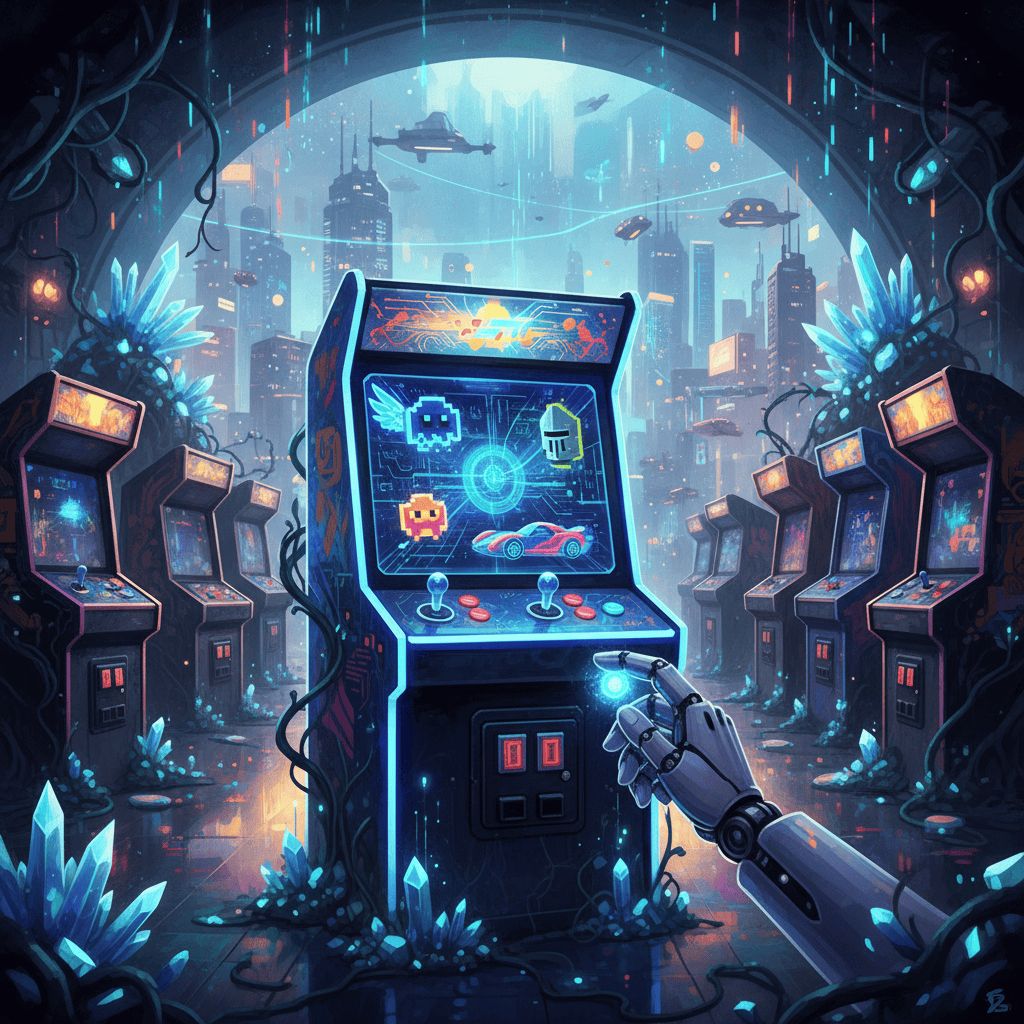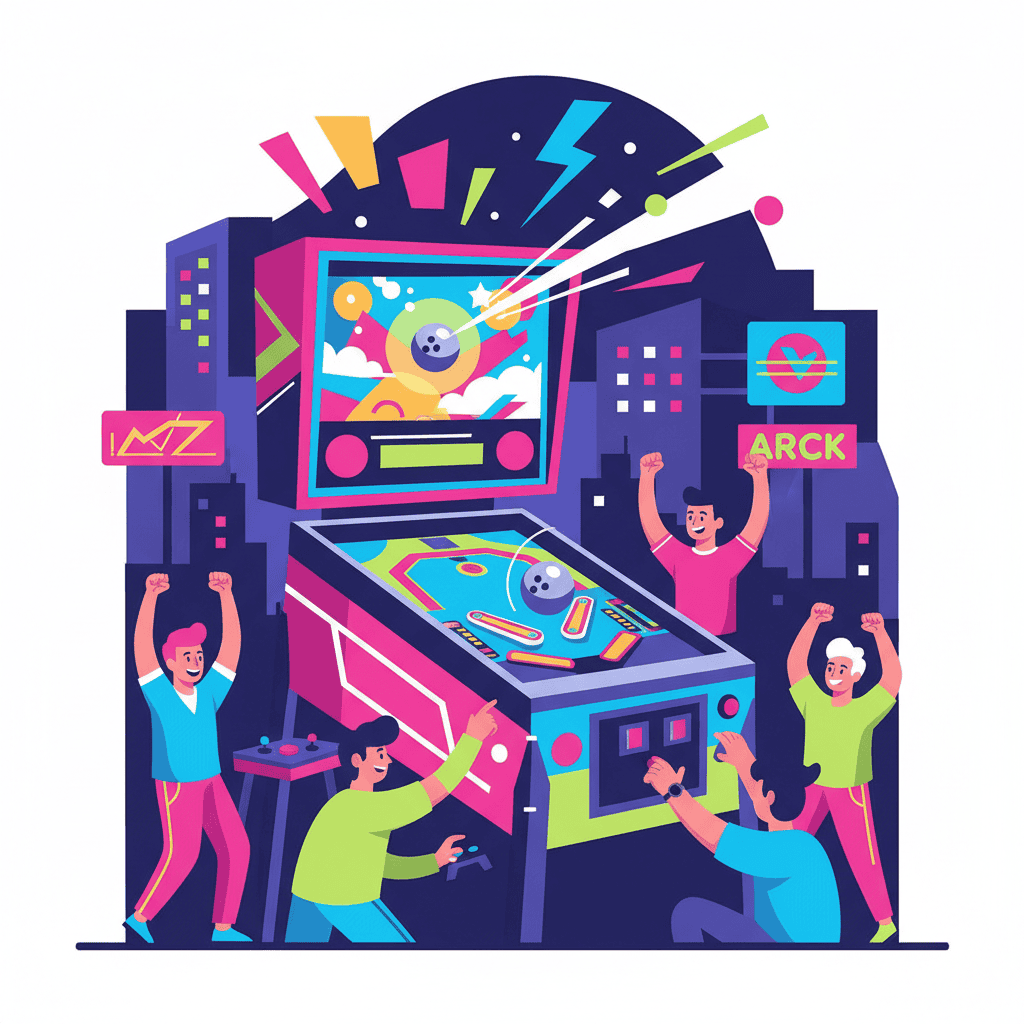Ever felt that nostalgic pull back to the buzzing energy of an arcade, the satisfying click of the joystick, the roar of the crowd as you snatch that high score? But what’s next? This isn’t just about pixelated nostalgia; it’s about understanding the technological shifts that will define the next generation of arcade experiences, both in physical locations and the digital realm. We’re going to dissect the emerging tech trends influencing arcade gaming in 2025 and beyond, from a gamer’s perspective, of course.
The Rise of Immersive Technologies: VR, AR, and Beyond
Let’s be honest, the tactile experience of an arcade joystick is hard to beat. But VR and AR are changing the game, literally. Remember when Virtual Boy flopped? Those were rough times. Now VR headsets have matured, and the potential for truly immersive arcade experiences is exploding.

Imagine stepping into a fully realized Pac-Man maze, dodging ghosts in a physical space, or battling foes in Street Fighter VI with realistic motion tracking. The “Cabinet” is evolving beyond the screen. I remember playing early VR prototypes back in the late 90s that felt bulky and nauseating, but the advancements in haptics and motion capture today make the experience significantly more compelling.
AR offers a different kind of immersion. Picture overlaying classic arcade games onto real-world environments, transforming your living room into a Galaga battlefield or your office breakroom into a Dance Dance Revolution dance floor. This level of integration could revitalize classic titles and bring a whole new audience into the fold. We could even see these AR experiences becoming competitive esports, which would be insane.
The Challenge of Accessibility and Cost
The biggest hurdles remain accessibility and affordability. High-end VR and AR setups are still pricey, limiting their reach. Developers need to strike a balance between immersive technology and accessible price points to reach the broader arcade gaming community. But if someone can crack the cost issue, it would change everything.
Key Takeaway: VR and AR have the potential to revolutionize arcade gaming, offering unprecedented levels of immersion. But affordability and accessibility are major challenges for widespread adoption.
AI’s Role in Game Design and Player Experience
Artificial intelligence isn’t just powering NPCs; it’s shaping the entire arcade experience. From dynamic difficulty adjustments that cater to individual skill levels to AI-driven level generation that keeps gameplay fresh, AI is becoming a vital component in modern arcade design. Consider a Space Invaders clone where the alien patterns are constantly shifting, never repeating, thanks to AI learning your gameplay style.
I’ve seen early versions of this in indie titles, and it’s incredible how it changes the experience from simple repetition to something much more dynamic and challenging. It’s all about maintaining that sweet spot where it’s difficult but not impossible, pushing your skill ceiling further with every play. This is precisely the kind of innovation that breathes new life into classic arcade game designs.
AI-Powered Opponents and Personalized Challenges
Think of AI opponents that adapt to your playstyle in fighting games, mastering new strategies and countering your approach in real-time. That’s more than a simple CPU; it’s a learning opponent with the potential to create truly challenging and rewarding experiences. Imagine the kind of leaderboard battles this would fuel.
- Personalized Difficulty: Adjusting difficulty based on skill level provides a smooth learning curve and keeps players engaged.
- Procedurally Generated Levels: AI can create near-infinite variations of levels, enhancing replayability.
- AI-Driven Storytelling: Imagine an arcade experience with a dynamic story that unfolds differently based on player choices.
The Evolution of Input Devices: From Joysticks to Motion Capture
The joystick, the trackball, the button mashing – these are iconic elements of the arcade experience. But what’s next? I see a fusion of classic inputs with innovative technologies. Haptic feedback is already improving the tactile experience, making button presses and joystick movements feel more responsive and satisfying.
Motion capture suits offer a new frontier, fully integrating players’ movements into the game. The arcade experience will be more than just button-mashing; it will become a whole-body, interactive performance. I’m picturing a Dance Dance Revolution style game with advanced haptic suits. That would be insane!
Haptic Feedback and Motion Capture Advancements
Haptic suits can enhance player immersion by providing realistic feedback based on in-game actions. Motion capture allows players to interact with the game in new and imaginative ways. This is not just gaming; it’s a physical experience, adding a whole other level of depth that was simply impossible before.
The Resurgence of Physical Arcades: Community and Nostalgia
In a digital world, physical arcades could seem like a relic of the past. But they’re undergoing a renaissance. The social aspect of playing games side-by-side with friends, the competitive spirit of chasing high scores, and the sheer nostalgia of the arcade environment are powerful draws for many players. New arcades are popping up, often blending classic titles with cutting-edge technology, creating a unique blend of old and new. I remember the first time I went to an arcade; it was overwhelming and magical. That same feeling can be rekindled today.
The combination of cutting-edge technology and the social aspect of physical arcades could lead to new communities and a renewed appreciation for arcade gaming as a whole.
Hybrid Arcades: Blending Classic and Modern
Many modern arcades are embracing hybrid models, combining classic games with newer titles that showcase emerging technologies. This blend appeals to both seasoned gamers and newcomers, fostering a sense of community and shared experience.
Let’s Play: Next Steps
The future of arcade gaming is incredibly exciting. The integration of VR, AR, AI, and innovative input methods will redefine what’s possible. The key is to build on the strengths of the classic arcade experience – its social nature and focus on skill-based competition – while embracing the power of new technologies. Don’t just read about it, go out and experience it for yourself! See what’s new at your local arcade or explore some of the indie VR titles hitting Steam. This is a journey, not a destination.

Frequently Asked Arcade Questions
Q: What VR headsets are best for arcade-style gaming?
A: High-refresh-rate headsets with good motion tracking are key. Consider the latest offerings from Meta (Quest), HTC (Vive), and Valve (Index), keeping an eye on reviews for comfort and latency.
Q: How will AI change the competitive landscape of arcade games?
A: AI-powered opponents will constantly adapt, creating dynamically challenging experiences. This will also create highly replayable games, fostering deeper competition between players mastering AI opponents.
Q: Are physical arcades truly making a comeback?
A: Yes, but the resurgence is more of a hybrid model. Combining classic appeal with new tech is proving successful. We’re seeing a significant investment in these locations.
Q: What are the most promising emerging input devices?
A: Haptic feedback suits and advanced motion capture technology are transforming player interaction. This isn’t just about pressing buttons, but about truly embodying the game.
Q: Will AR impact the classic arcade experience?
A: Absolutely! AR can blend digital arcade experiences into the physical world, bringing the excitement and competition into unexpected spaces.
Q: How can developers attract both veterans and newcomers to these new games?
A: By striking a balance between classic gameplay and innovative features. Nostalgia is a powerful tool, but new tech will be needed to capture a new generation.
Q: What is the biggest challenge for future arcade gaming?
A: Balancing the cost and accessibility of new technologies with the desire to create truly immersive experiences. This includes the cost of VR/AR headsets and related peripherals.
Decoding the Tech Trends Shaping the Future of Arcade Games in 2025




